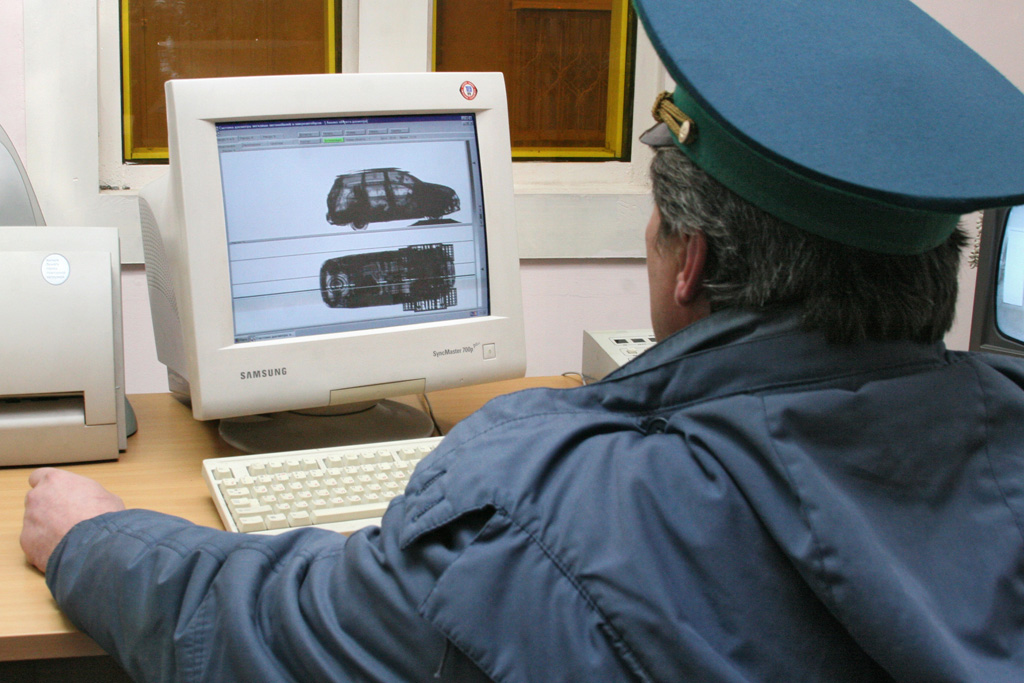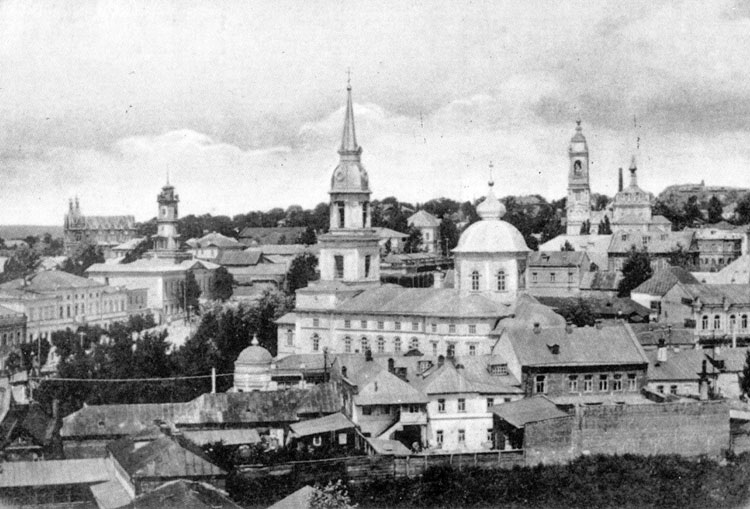|
Paniki, Kursk Oblast
Paniki () is a rural locality () and the administrative center of Panikinsky Selsoviet Rural Settlement, Medvensky District, Kursk Oblast, Russia. Population: Geography The village is located on the Paniki Brook (a left tributary of the Polnaya in the basin of the Seym), from the Russia–Ukraine border, south of Kursk, south-east of the district center – the urban-type settlement Medvenka. ; Streets There are the following streets in the locality: 1st Brigada, 3rd Brigada, 5th Brigada, 6th Brigada, 7th Brigada, Koptevka, Molodyozhnaya and Shelkovskaya (381 houses). ; Climate Paniki has a warm-summer humid continental climate (''Dfb'' in the Köppen climate classification). Transport Paniki is located from the federal route Crimea Highway (a part of the European route ), on the roads of intermunicipal significance ("Crimea Highway" – Paniki – Drachyovka) and ("Crimea Highway" – Paniki – 38N-229), from the nearest railway halt ''457 km'' (railwa ... [...More Info...] [...Related Items...] OR: [Wikipedia] [Google] [Baidu] |
Kursk Oblast
Kursk Oblast (, ) is a federal subjects of Russia, federal subject of Russia (an oblast). Its administrative center is the types of inhabited localities in Russia, city of Kursk. As of the 2021 Russian census, 2021 census, Kursk Oblast had a population of 1,082,458. History The territory of Kursk Oblast has been populated since the end of the Last Glacial Period, last ice age. Slavic tribes of the Severians inhabited the area. From 830 the current Kursk Oblast was part of the Rus' Khaganate and Kievan Rus' states. The oldest towns in the region are Kursk and Rylsk, Russia, Rylsk, first mentioned in 1032 and 1152, respectively, both capitals of small medieval eponymous duchies. In the 13th century, the region was Mongol invasion of Kievan Rus', conquered by the Mongol Empire. In the 15th century it was part of the Grand Duchy of Lithuania under the Jagiellonian dynasty. It was lost in the 16th-century Muscovite–Lithuanian Wars to the Grand Duchy of Moscow. A real growth of t ... [...More Info...] [...Related Items...] OR: [Wikipedia] [Google] [Baidu] |
Medvensky District
Medvensky District () is an administrativeResolution #489 and municipalLaw #48-ZKO district (raion), one of the twenty-eight in Kursk Oblast, Russia. It is located in the southern central part of the oblast. The area of the district is . Its administrative center is the urban locality (a work settlement) of Medvenka. Population: 19,220 ( 2002 Census); The population of Medvenka accounts for 27.6% of the district's total population. Geography Medvensky District is located in the south central region of Kursk Oblast. The terrain is hilly plain on the Central Russian Upland. There are no major rivers through the district. The district is 15 km south of the city of Kursk and 480 km southwest of Moscow Moscow is the Capital city, capital and List of cities and towns in Russia by population, largest city of Russia, standing on the Moskva (river), Moskva River in Central Russia. It has a population estimated at over 13 million residents with .... The area me ... [...More Info...] [...Related Items...] OR: [Wikipedia] [Google] [Baidu] |
Selsoviet
A selsoviet (; , ; ) is the shortened name for Selsky soviet, i.e., rural council (; ; ). It has three closely related meanings: *The administration (''soviet (council), soviet'') of a certain rural area. *The territorial subdivision administered by such a council. *The building of the selsoviet administration. Selsoviets were the lowest level of administrative division in rural areas in the Soviet Union. After the dissolution of the Soviet Union, they were preserved as a third tier of administrative-territorial division throughout Ukraine, Belarus, and many of the federal subjects of Russia. A selsoviet is a rural administrative division of a raion (district) that includes one or several smaller rural localities and is in a subordination to its respective raion administration. The name refers to the local rural self-administration, the rural soviet (council), a part of the Soviet system of administration. The head of a selsoviet is called chairman, who had to be appointed by hi ... [...More Info...] [...Related Items...] OR: [Wikipedia] [Google] [Baidu] |
Types Of Inhabited Localities In Russia
The classification system of inhabited localities in Russia and some other post-Soviet states has certain peculiarities compared with those in other countries. Classes During the Soviet time, each of the republics of the Soviet Union, including the Russian SFSR, had its own legislative documents dealing with classification of inhabited localities. After the Dissolution of the Soviet Union, the task of developing and maintaining such classification in Russia was delegated to the federal subjects.Articles 71 and 72 of the Constitution of Russia do not name issues of the administrative and territorial structure among the tasks handled on the federal level or jointly with the governments of the federal subjects. As such, all federal subjects pass their own laws establishing the system of the administrative-territorial divisions on their territories. While currently there are certain peculiarities to classifications used in many federal subjects, they are all still largel ... [...More Info...] [...Related Items...] OR: [Wikipedia] [Google] [Baidu] |
Russia
Russia, or the Russian Federation, is a country spanning Eastern Europe and North Asia. It is the list of countries and dependencies by area, largest country in the world, and extends across Time in Russia, eleven time zones, sharing Borders of Russia, land borders with fourteen countries. Russia is the List of European countries by population, most populous country in Europe and the List of countries and dependencies by population, ninth-most populous country in the world. It is a Urbanization by sovereign state, highly urbanised country, with sixteen of its urban areas having more than 1 million inhabitants. Moscow, the List of metropolitan areas in Europe, most populous metropolitan area in Europe, is the capital and List of cities and towns in Russia by population, largest city of Russia, while Saint Petersburg is its second-largest city and Society and culture in Saint Petersburg, cultural centre. Human settlement on the territory of modern Russia dates back to the ... [...More Info...] [...Related Items...] OR: [Wikipedia] [Google] [Baidu] |
Seym (river)
The Seym or Seim (; ) is a river that flows westward in Russia and Ukraine. It is long (250 km within Ukraine) and its basin area about . It is the largest tributary of the Desna. Places on the river include Kursk, Kurchatov, Rylsk, Glushkovo, Putyvl, Baturyn, and the junction with the Desna, which continues west and south past Chernihiv to Kyiv. In September 2024, during the Russian invasion of Ukraine, Ukrainian officials accused Russia of polluting the river by dumping sewage from a sugar factory in Tyotkino, Kursk Oblast, resulting in environmental damage estimated at about Hr 186 million ($4.5 million) in Chernihiv Oblast that included a decrease in oxygen levels and fish kills downstream. The river also serves cooling water for the Kursk Nuclear Power Plant The Kursk Nuclear Power Plant (Kurskaya atomnaya electrostansaya in Russian) is one of the three biggest nuclear power plants (NPPs) in Russia and one of the four biggest electricity producers in the country. ... [...More Info...] [...Related Items...] OR: [Wikipedia] [Google] [Baidu] |
Russia–Ukraine Border
The Russia–Ukraine border is the international boundary between Russia and Ukraine. Over land, the border spans five Russian Oblast, oblasts and five Ukrainian oblasts. Due to the ongoing Russo-Ukrainian War, which began in early 2014, the border between Russia and Ukraine is different from the legal border recognized by the United Nations. , Russia is Russian-occupied territories of Ukraine, militarily occupying a significant portion of Ukraine, and Ukraine is August 2024 Kursk Oblast incursion, militarily occupying a very small portion of Russia. According to a 2016 statement by Viktor Nazarenko, the head of the State Border Guard Service of Ukraine, the Ukrainian government did not have control over of the international border with Russia.Stat ... [...More Info...] [...Related Items...] OR: [Wikipedia] [Google] [Baidu] |
Kursk
Kursk (, ) is a types of inhabited localities in Russia, city and the administrative center of Kursk Oblast, Russia, located at the confluence of the Kur (Kursk Oblast), Kur, Tuskar, and Seym (river), Seym rivers. It has a population of Kursk is the oldest city in the oblast, recorded in 1032 as part of the Kievan Rus'. It became the seat of a small eponymous principality in the 13th century, before passing to Grand Duchy of Lithuania, Lithuanian rule in the Late Middle Ages, late medieval period, and then to Grand Duchy of Moscow, Moscow in the early modern period. Kursk has served as the seat of regional administration since 1779. The area around Kursk was the site of a turning point in the Soviet–German struggle during World War II and the site of the Battle of Kursk, single largest battle in history. Geography Urban layout Kursk was originally built as a fortress city on a hill dominating the plain. The settlement was surrounded on three sides by the Kur (Kursk Oblast), K ... [...More Info...] [...Related Items...] OR: [Wikipedia] [Google] [Baidu] |
Medvenka, Kursk Oblast
Medvenka () is an urban locality (an urban-type settlement) in Medvensky District of Kursk Oblast, Russia Russia, or the Russian Federation, is a country spanning Eastern Europe and North Asia. It is the list of countries and dependencies by area, largest country in the world, and extends across Time in Russia, eleven time zones, sharing Borders .... Population: Geography The settlement is located on the Medvenka (a.k.a. ''Medvensky Kolodez'') Brook (a left tributary of the Polnaya in the basin of the Seym (river), Seym), 65 km from the Russia–Ukraine border, 33 km south of Kursk. ; Streets There are the following streets in the locality: 1st Maya, Beryozovaya, Cheptsova, pereulok F. Engelsa, Gagarina, pereulok Gazovy, Ivana Kozheduba, K. Marksa, Kirova, Kolkhoznaya, Komsomolskaya, pereulok Kooperativny, pereulok Kutuzova, pereulok Lenina, Lenina, M. Gorkogo, Magistralnaya, Marata, Molodyozhnaya, pereulok Nakhimova, Parkovaya, Pevneva, Ploshchad Geroyev, Polevaya, 2 ... [...More Info...] [...Related Items...] OR: [Wikipedia] [Google] [Baidu] |
Humid Continental Climate
A humid continental climate is a climatic region defined by Russo-German climatologist Wladimir Köppen in 1900, typified by four distinct seasons and large seasonal temperature differences, with warm to hot (and often humid) summers, and cold (sometimes severely cold in the northern areas) and snowy winters. Precipitation is usually distributed throughout the year, but often these regions do have dry seasons. The definition of this climate in terms of temperature is as follows: the mean temperature of the coldest month must be below or depending on the isotherm, and there must be at least four months whose mean temperatures are at or above . In addition, the location in question must not be semi-arid or arid. The cooler ''Dfb'', ''Dwb'', and ''Dsb'' subtypes are also known as hemiboreal climates. Although amount of snowfall is not a factor used in defining the humid continental climate, snow during the winter in this type of climate is almost a guarantee, either intermitte ... [...More Info...] [...Related Items...] OR: [Wikipedia] [Google] [Baidu] |
Köppen Climate Classification
The Köppen climate classification divides Earth climates into five main climate groups, with each group being divided based on patterns of seasonal precipitation and temperature. The five main groups are ''A'' (tropical), ''B'' (arid), ''C'' (temperate), ''D'' (continental), and ''E'' (polar). Each group and subgroup is represented by a letter. All climates are assigned a main group (the first letter). All climates except for those in the ''E'' group are assigned a seasonal precipitation subgroup (the second letter). For example, ''Af'' indicates a tropical rainforest climate. The system assigns a temperature subgroup for all groups other than those in the ''A'' group, indicated by the third letter for climates in ''B'', ''C'', ''D'', and the second letter for climates in ''E''. Other examples include: ''Cfb'' indicating an oceanic climate with warm summers as indicated by the ending ''b.'', while ''Dwb'' indicates a semi-Monsoon continental climate, monsoonal continental climate ... [...More Info...] [...Related Items...] OR: [Wikipedia] [Google] [Baidu] |





